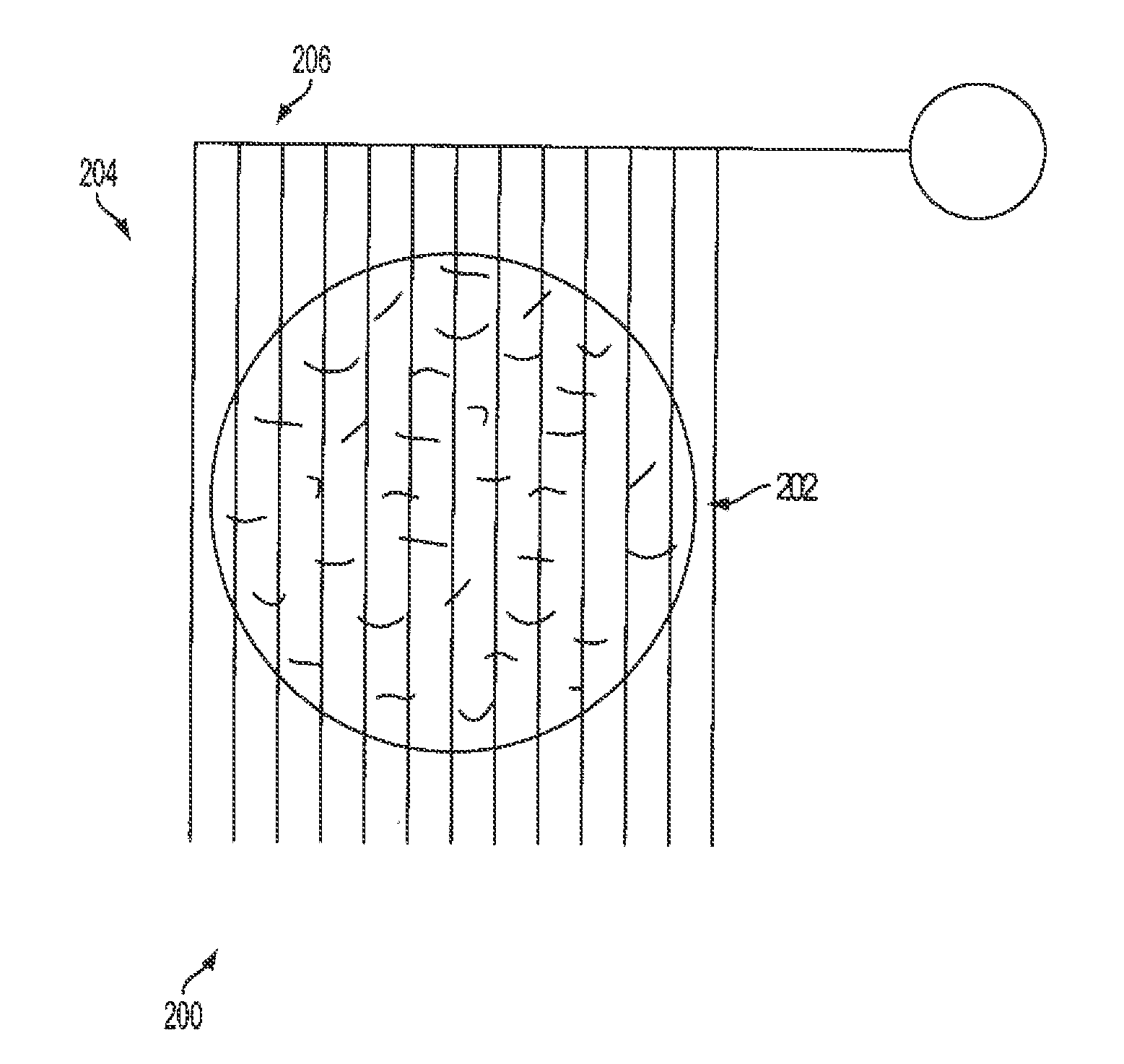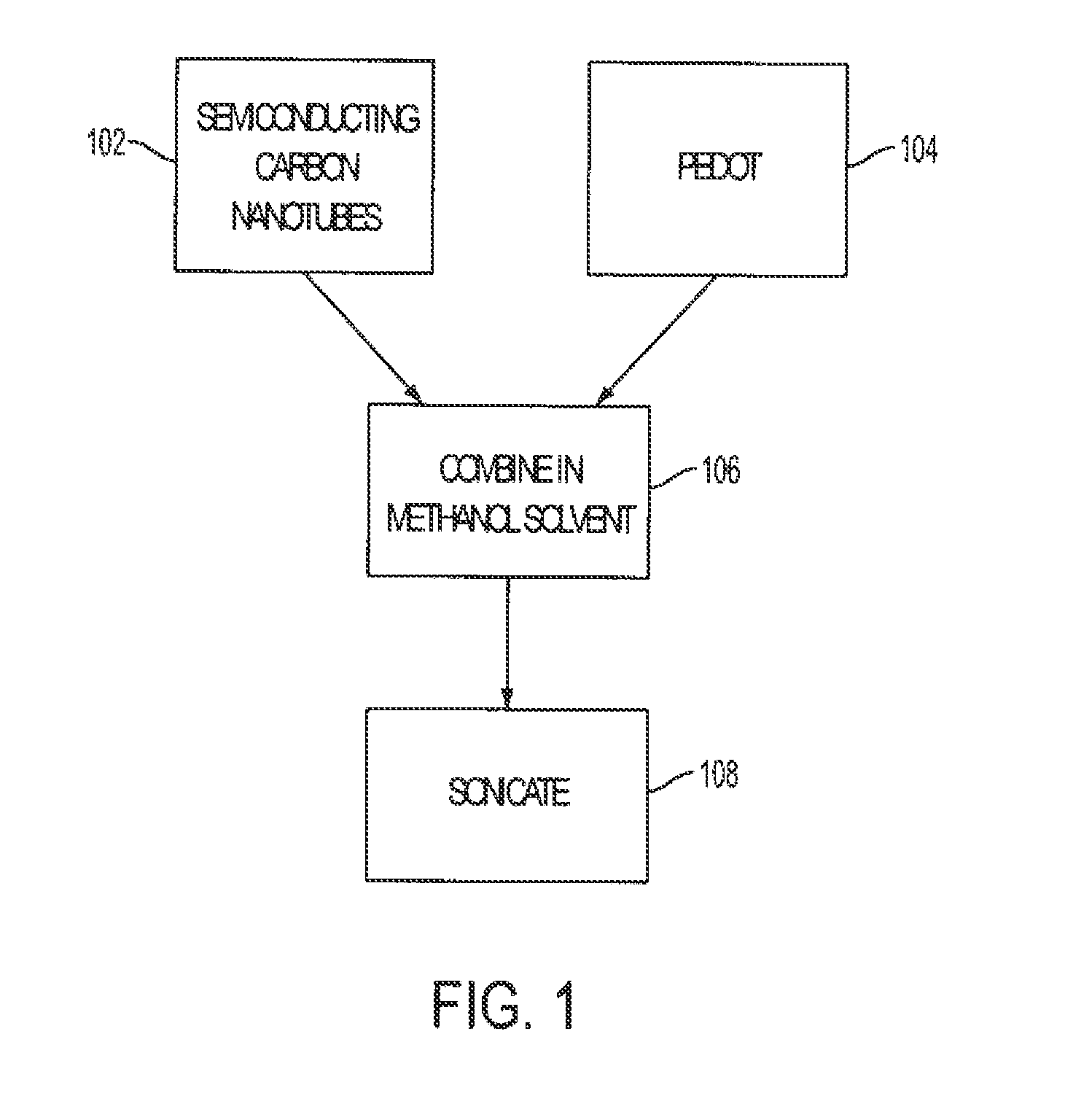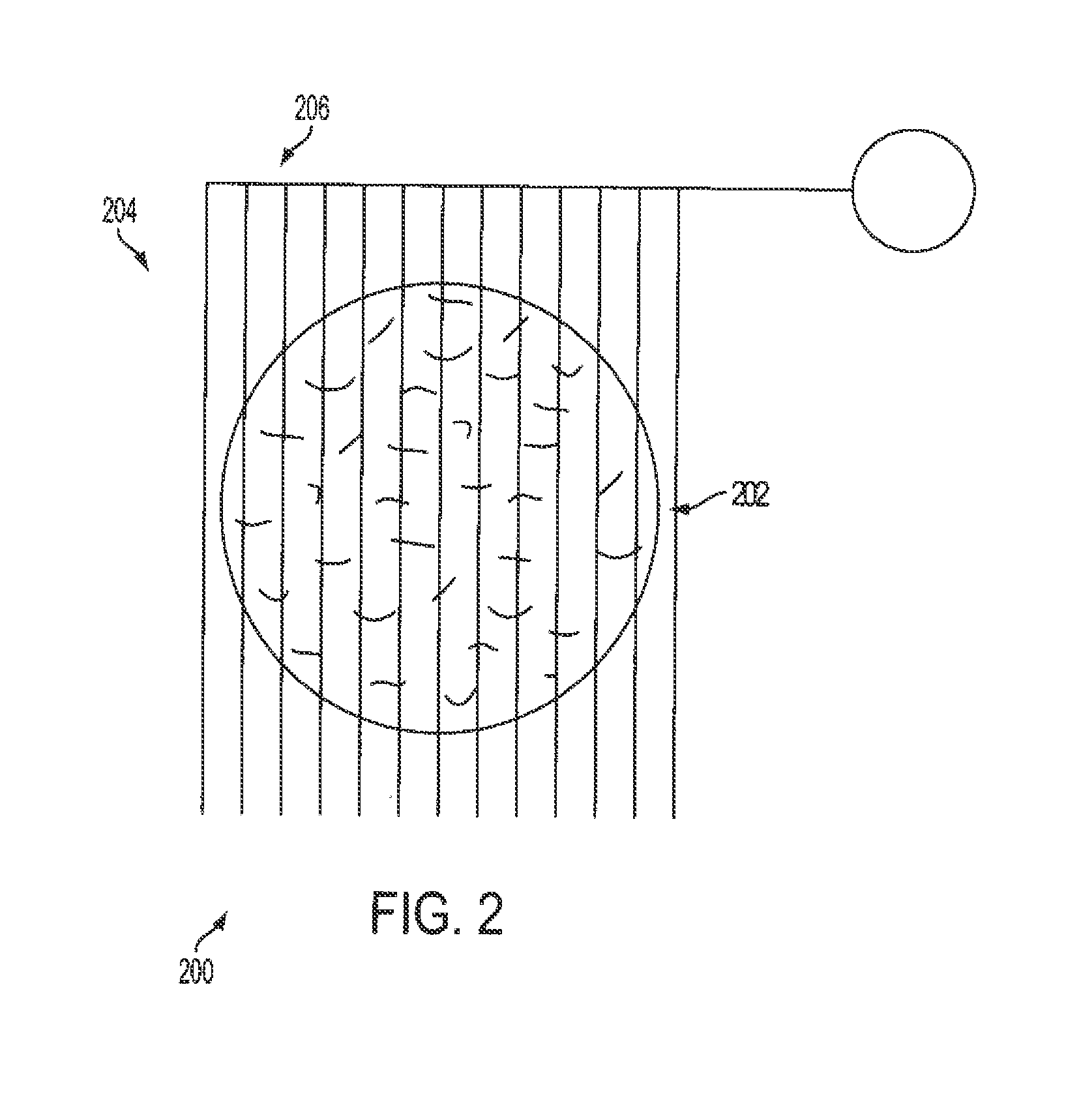[0007]Conducting
polymer and nano-materials based composites that are
electrically conductive while at the same time offering advantages of light weight,
corrosion resistance, durability and long service lifetime are very valuable. The primary objective of the present invention is to achieve coatings that offer
lightning protection and
electromagnetic interference, EMI,
immunity as well as electrical shielding, but there are other important, and similar objectives that will be met with conductive coatings of this type, where the
conductivity can be controlled by several means.
[0008]The technical approach that is proposed herein is to use intrinsically conductive polymers based on the π conjugated ring, with the delocalized bond formed by the overlapping π
electron orbitals, in conjunction with semiconducting single walled carbon nanotubes. This combination has been found through extensive research to offer a number of benefits over other combinations of conducting polymers and
nanomaterials.
[0014]The inventor read that single stranded
DNA, ssDNA, which has a hydrophobic surface where the nucleotides bind, and a hydrophilic surface where the
phosphate group is exposed, solved this problem very well. The single stranded
DNA wrapped itself around the
carbon nanotube, as the hydrophobic surface of the carbon nanotubes energetically favored the hydrophobic surface of the single stranded
DNA. This left the hydrophilic surface of the DNA exposed and this carbon
nanotube-ssDNA
hybrid then easily formed a dispersion in water as the
solvent.
[0022]The advantages of this
nanocomposite film based on a conducting
polymer dispersed together with a semiconducting carbon
nanotube are the potential for enhanced
conductivity and the attendant strength and durability offered at the same time by the carbon nanotubes. Other composites where, for instance, metallic carbon nanotubes have been combined with the conducting polymer only added the
metallic nanotubes as an additional charge path. They were not included to be wrapped with the conducting polymer and did not enhance the conduction of the polymer by a charge transfer
doping action. Carbon nanotubes have an axial Young's modulus of over 100 GPa, so they offer tremendous strength and their covalent carbon-carbon bond seems to be able to withstand flexure or cyclic bending for an
indefinite period of time. Further research has shown that other intrinsically conducting polymers in various solvents achieved similar results with different useful characteristics. The conducting polymer Poly(2-methoxy-5-(2′-ethylhexyloxy)-1,4-phenylenevinylene), MEH-PPV, in a
tetrahydrofuran, THF,
solvent also showed remarkable properties to disperse carbon nanotubes and form highly conductive films. With the higher bandgap of MEH-PPV in the range of 2
electron volts or greater, as compared to the bandgap of around one
electron volt for PEDOT, it was found that optical properties of semiconducting carbon nanotubes could be more readily utilized, since many of the carbon nanotubes with diameters in the range of one nanometer had bandgaps around one electron
volt that overlapped with the bandgap of PEDOT. With semiconducting carbon nanotubes with bandgaps in the one electron
volt range that yielded
optical transition across the first van Hove singularities at around a one micron
wavelength, which is very convenient for near
infrared and
fiber optic applications, the MEH-PPV based carbon
nanotube composites demonstrated enhanced optical effects. The band alignment due to the
electron affinity of MEH-PPV relative to carbon nanotubes aligned the bandgap of the carbon nanotubes such that effective
electron transfer between the MEH-PPV and the carbon nanotubes would take place. The allowed better control over the
optical transition strength and the related
optical index of
refraction, as well as the electrical
conductivity of the
composite film.
[0024]It is further recognized that the control over the electrical conductivity of the polymer-semiconducting carbon nanotube film through
Fermi level modulation within the carbon nanotubes would alter the optical properties of the carbon nanotubes. This modulation of the carbon nanotube's optical properties may also be brought about by the
screening effect of the charge on the excition state associated with the carbon nanotube's
optical transition. This effect will also change the index of
refraction of the carbon nanotube through the well known Kramers-Kronig relations. The practical use of these properties is to create films that can refract light in a controlled manner. This has practical use in optical switching, where for instance the film is disposed between two optical waveguides and the degree of light that couples into one
fiber versus the other can be controlled through the
electrical control of the index of
refraction of the carbon nanotube film.
 Login to View More
Login to View More 


